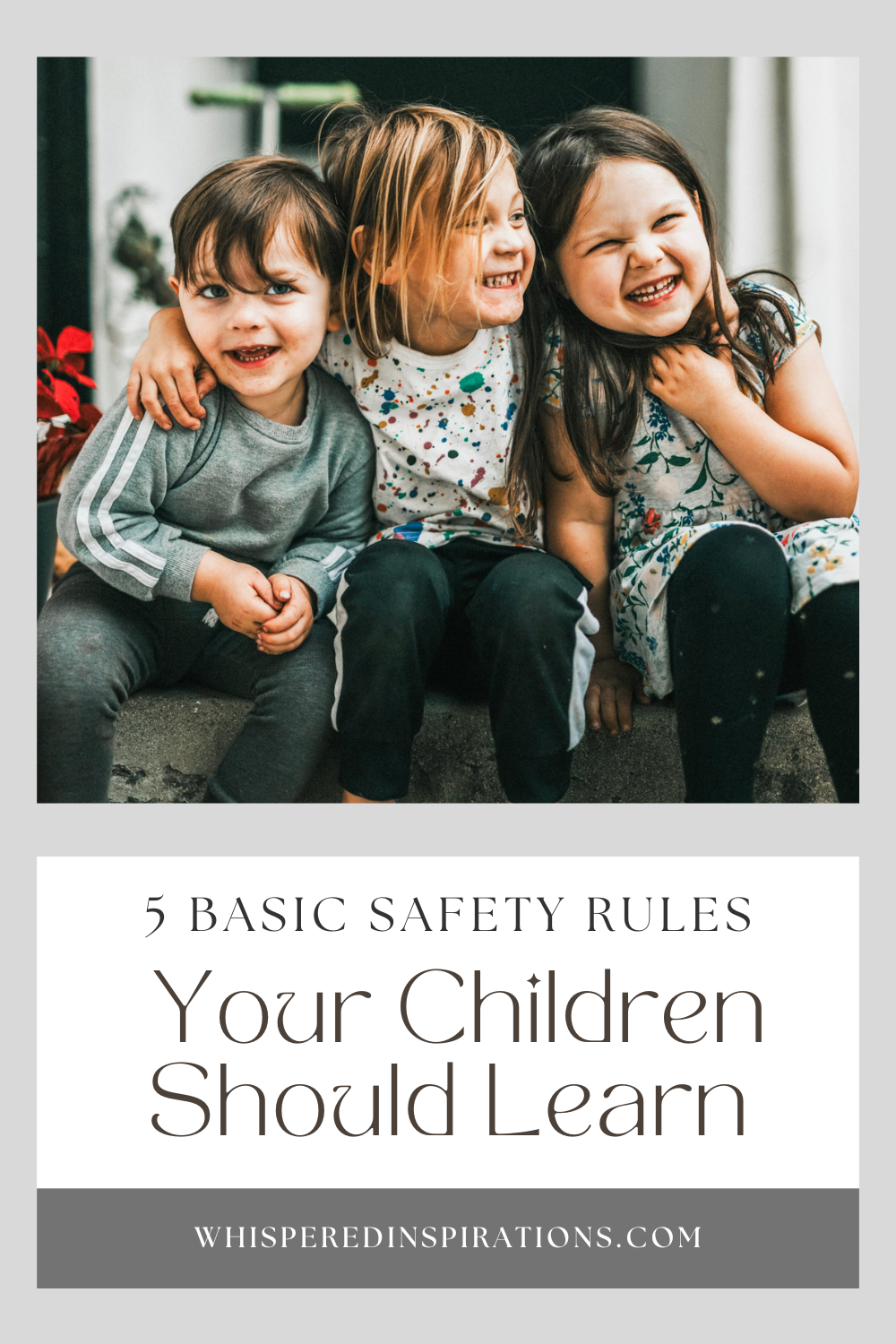5 Basic Safety Rules Your Children Should Learn

Safety Rules Your Children Should Know
Teaching children about safety is more than just setting some rules and hoping they’ll follow them. It’s helping them understand the risks and offering solutions and protection in different situations.
While it’s impossible to predict all the possible risks to which your child or anyone else may be exposed, there are a few common topics that should be discussed.
These include how to interact with strangers and how to navigate the internet. With these considerations in mind, here are a few safety rules your child should learn.
1. Memorize Your Personal Information
Once your child starts school, it’s important to teach them their personal information. This includes their full name, home address, and a parent or guardian’s phone number. Memorizing this info will let them reach out to someone for help during emergencies or times when they’re lost somewhere.
However, just knowing it isn’t enough. You need to train your child on when and how to share it safely, too. Teach them to only give out their info to trusted adults or authorities when necessary.
For example, you can run through different scenarios with your child where they might have to give basic information if they were lost at a park.
Teach them who is safe for them to approach for help. Like police officers or teachers, and practice what they should say.
This way, not only will they learn the information, but also know that there are specific people they should reach out to.
2. Don’t Trust Strangers
Being wary of strangers is second nature now. We’ve all heard the phrase “stranger danger” growing up. You’ll likely want your child to know that while most strangers might not represent a threat, they should also be cautious of unfamiliar people.
On top of that, help them recognize suspicious behavior and identify both good approaches vs. bad ones.
For example, explain to your child that if a stranger offers them a ride home or asks for help finding something, then stay away from them. Teach them which strangers are more likely to be safe, like police officers, in case no adult they know personally is around.
If you have valid reasons to believe someone you know is dangerous, instruct your child to stay away from them. For example, you can use Nuwber, a people search website, to find out if there are any registered sex offenders in your neighborhood.
3. Only Use Pedestrian Crossings and Obey Traffic Signals
Learning how to cross streets properly promotes independence while keeping children out of harm’s way. The basic rule of looking both ways before crossing, using pedestrian crossings, and obeying traffic signals helps reduce accidents significantly.
Kids need to understand vehicles can come from any direction and some drivers won’t be able to see them.
Teach them to make eye contact with drivers and wait for a car to fully stop before walking to enhance their safety.
For example, show your child how to cross streets when you take walks together. Whenever possible, find a crosswalk or traffic signal so they know where these options are.
Remind them to look left, right then left again even if the light is green. This hands-on experience combined with your guidance helps children understand why these rules are important. All while reinforcing safe behavior by practicing it with you.
4. Don’t Give Personal Information While Browsing the Internet
The first thing they should teach your child when they start using the Internet is to never share personal information and don’t trust strangers. They also have to learn how to spot unsafe websites so they can steer clear of clicking on suspicious links.
You want your kid to feel comfortable coming up to you if they see something sketchy.
Note that you won’t always be able to control what your child does online. The older they are, the less control you’ll have.
In other words, while you should be careful what a young child is doing online, you should also prepare them for the time when you’ll no longer be able to track their activity in any reliable way.
As such, it’s best practice to teach them how to navigate the Internet safely, rather than assume you’ll always be able to control them.
The older your children get, the more they’ll yearn to use social media. That’s why it’s so important to set clear guidelines early on and discuss the potential risks that come with using these platforms.
Teach your child how to work with privacy settings, what you should share online and what not, what goes into a permanent post, etc. Talk about cyberbullying — show them what it looks like and teach them how to react if they see or experience it.
5. Know Who to Call in Case of an Emergency
Just because your children are at home, it doesn’t mean they are safe. As such, learning them how to respond to emergencies is not something to be neglected.
Such lessons could include knowing which numbers to dial and how to relay information clearly while under stress. They should have simple first-aid knowledge memorized and know who to contact if there’s a less urgent situation (like when they need an adult quickly).
Prepare them for all different types of scenarios like natural disasters, fires, or other types of accidents.
Creating an emergency contact list together is one way you could prepare a child for negative events. Place it somewhere visible around the house so that everyone knows where it is.
If your child is young, test out dialing 911 with a toy phone so that they know what buttons need pressing in case of emergency.
Your Child Needs to Be Prepared to Take Care of Themselves
Helping your children stay safe is a never-ending process, as the types of threats to which they’re exposed change as they grow. No matter how protective you are, there will be times when your child will be away from you, and you’ll have limited power to protect them.
As such, preparing them to take care of themselves whenever necessary is a must.
You May Also Like:
- The 4 Essential Safety Tips When Riding a Bicycle
- 7 Electrical Home Safety Tips You Need to Know
- 7 Safety Tips to Travel Safely Everywhere
Start by establishing trust and empowering them with knowledge so that they’re capable of navigating the world by themselves whenever they need to.
However, make sure you don’t scare them. Instead, do your best to teach them that they can make safe choices on their own and that help is available whenever they require it.
Do you have any other safety rules your children should learn?

PIN FOR LATER:

Nancy Polanco is a freelance journalist, lifestyle content creator, and editor of Whispered Inspirations. She is a proud Mom to Gabby and Michaela and partner and best friend to Darasak. Having worked as part of a health care team for almost a decade, Nancy is happy to be back to her passion. She is a contributor to the Huffington Post, TODAY’s Parents, and an Oprah Magazine Brand Ambassador.







